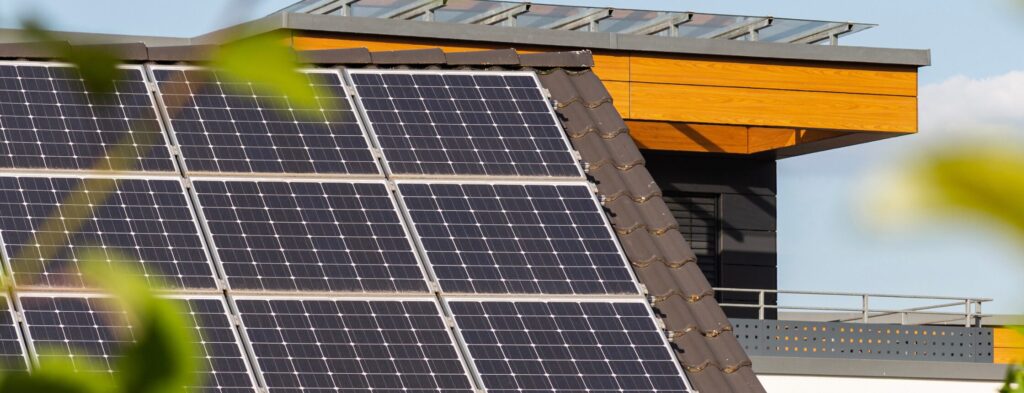
The real estate market in 2025 is set for major transformations. Rapid technological advancements, shifting buyer demographics, and evolving market preferences will shape how agents, teams, and brokerages operate. Staying ahead of these trends is not just beneficial—it’s essential for success in an increasingly competitive industry.
From AI-powered client interactions to the rise of secondary markets, here’s what real estate professionals need to know to stay competitive in 2025.
Table of Contents
1. The Rise of AI and Tech-Driven Real Estate

Technology continues to reshape real estate, and in 2025, it will be at the core of how professionals engage with clients and streamline operations. No longer just an add-on, tech adoption is becoming a necessity.
- AI-driven client interactions – Smart chatbots and AI-powered CRMs are improving customer service, offering instant responses and personalized property recommendations. However, with AI’s rapid advancements, some wonder if AI will replace real estate agents.
- Virtual and augmented reality (VR/AR) – Buyers can now tour properties remotely in stunning detail, reducing the need for in-person visits until the final stages.
- Blockchain-based transactions – Secure, transparent, and faster real estate transactions are reducing paperwork and mitigating fraud risks.
- Predictive data analytics – Advanced data insights help agents forecast market trends and identify high-value prospects more efficiently.
Embracing these innovations will enhance client experiences, boost efficiency, and give tech-savvy agents a competitive edge in an evolving marketplace.
2. Shifting Buyer Demographics and Preferences

The buyer landscape is evolving, with millennials and Gen Z shaping market demands in new ways. Understanding these shifts is crucial for targeted marketing and client engagement.
- Millennials favor urban living – They prioritize access to walkable neighborhoods, modern amenities, and public transportation.
- Gen Z enters the market – Unlike millennials, Gen Z buyers are showing a stronger preference for affordable suburban homes with tech-integrated features.
- Co-living and flexible housing solutions – Younger buyers are exploring co-living spaces as a cost-effective and community-driven alternative to traditional homeownership.
- Diverse family structures shaping demand – Multi-generational housing and flexible floor plans are growing in popularity to accommodate different household needs.
By understanding these generational preferences, agents can refine their messaging and tailor property recommendations to align with evolving buyer expectations. Top-producing agents know how to adapt to these shifts.
3. Secondary and Tertiary Markets on the Rise

High costs in major metros, coupled with the continued influence of remote work, are fueling growth in smaller markets. Buyers are increasingly drawn to secondary and tertiary cities that offer affordability, job opportunities, and lifestyle benefits.
- Booming cities like Dallas/Fort Worth and Raleigh – These markets are attracting buyers seeking a balance between urban convenience and cost savings.
- Mixed-use developments gaining traction – Walkable neighborhoods with live-work-play environments are becoming more desirable.
- Increased investor interest – More investors are focusing on suburban and rural areas, leading to development and infrastructure expansion.
For agents, understanding the appeal of these emerging markets provides an opportunity to guide clients toward strong investment and living opportunities beyond traditional urban centers. Changes in zoning laws may also influence these markets.
4. Growing Demand for Sustainable and Energy-Efficient Homes

Sustainability is no longer a niche demand—it’s becoming a mainstream expectation among buyers. Eco-conscious living and long-term cost savings are driving interest in energy-efficient properties.
- Solar power and green energy solutions – More homes are integrating solar panels and energy-efficient appliances.
- Smart home energy management – Buyers are looking for AI-powered home systems that optimize energy consumption.
- Eco-friendly construction materials – Sustainable building practices and non-toxic materials are gaining traction in new developments.
- Water conservation and sustainability features – Features like rainwater harvesting, greywater systems, and drought-resistant landscaping are becoming key selling points.
Highlighting these green home features can make properties more attractive to today’s environmentally conscious buyers and add long-term value to real estate investments.
5. Resilience and Evolution of the Luxury Market

Despite market fluctuations, the luxury real estate sector remains strong, with affluent buyers prioritizing exclusivity, security, and high-end amenities.
- Private wellness facilities – Luxury properties are incorporating personal gyms, meditation spaces, and spa-like features.
- Advanced smart home technology – High-net-worth buyers are looking for homes with sophisticated automation, from AI security systems to voice-controlled environments.
- Prime locations continue to dominate – Waterfront properties, mountain retreats, and exclusive gated communities maintain high demand.
- Personalized design and customization – Bespoke architecture and tailored interiors reflect the increasing desire for unique, one-of-a-kind properties.
Understanding the evolving expectations of luxury buyers allows agents to refine their approach, offering white-glove service and exclusive property experiences that meet high-end demands. Read more about the current trends in the luxury real estate market.
Staying Ahead in 2025’s Evolving Market
The real estate landscape in 2025 will be shaped by innovation, shifting demographics, and changing buyer expectations. Agents who embrace technology, target emerging markets, and tailor their strategies to modern buyer needs will thrive in the industry.
To stay ahead:
✔ Keep up with the latest tech innovations and integrate AI-driven tools into your workflow.
✔ Adapt marketing strategies to align with evolving generational homebuyer preferences.
✔ Explore opportunities in secondary and tertiary markets for clients seeking affordability.
✔ Highlight energy-efficient and sustainable home features to attract eco-conscious buyers.
✔ Understand the nuances of luxury real estate and offer a premium client experience.
By proactively adapting to these trends, real estate professionals can position themselves for long-term success in a rapidly evolving industry.
To listen to more of our podcast episodes, visit The #RealtyHack Podcast Page. The #RealtyHack Podcast is also available to listen to on Spotify, Google Podcasts, Apple Music, and your other favorite podcast directories.

Sign up for my newsletter and get updated for the next #RealtyHack!
